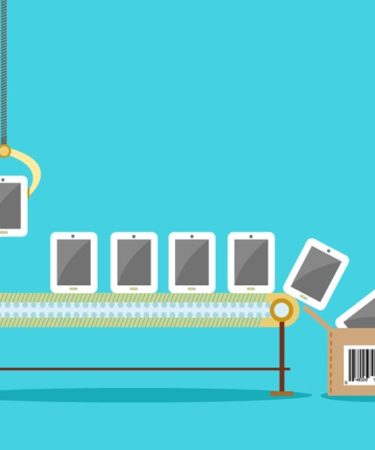The Road to App Supremacy: Mastering App Performance Optimization for Unforgettable Experiences

In today’s rapidly evolving digital landscape, where countless apps compete for users’ attention, delivering exceptional app performance is no longer a luxury but a necessity. Users have grown accustomed to seamless, fast, and efficient experiences, and anything less can lead to frustration and abandonment. As a developer, optimizing your app’s performance is vital not only for user satisfaction but also for the success and longevity of your application.
In this fast-paced digital world, where milliseconds matter, users demand apps that respond instantaneously, load quickly, and provide a smooth and delightful experience. Whether it’s a mobile app, a web application, or a desktop program, performance optimization is a key factor that sets apart outstanding apps from the rest.
Imagine an app that launches within the blink of an eye, effortlessly handles complex tasks, and seamlessly adapts to various devices and network conditions. Such an app captivates users, keeping them engaged, and encourages them to spread the word to others.
Facebook
Instagram
Linkedin
Table of Contents
Add a header to begin generating the table of contents
Optimizing Code:

1. Use Efficient Algorithms and Data Structures:
Efficiency starts at the foundation of your app’s code. By implementing efficient algorithms and data structures, you can significantly enhance your app’s performance. Choose algorithms with lower time complexity and leverage data structures that offer fast retrieval and insertion operations. This will improve the efficiency of critical operations, such as searching, sorting, and data manipulation.
This YouTuber Ate Bodybuilder Ronnie Coleman’s Diet for a Day squat press with bar bodybuilder in plymouth warns covid does not discriminate
When selecting algorithms, consider factors like time complexity (Big O notation) and choose the most appropriate algorithm for the task at hand. For example, use quicksort for efficient sorting or a hash table for fast data retrieval. Similarly, use data structures like arrays, linked lists, or binary trees based on your app’s specific needs.
2. Minimize Resource Consumption:
Carefully manage the resources your app consumes, such as memory, CPU, and network bandwidth. Optimize resource usage by eliminating unnecessary operations, closing connections promptly, and releasing unused memory. This will prevent resource bottlenecks and ensure that your app runs smoothly even on devices with limited capabilities.
To minimize resource consumption, avoid memory leaks by properly deallocating resources, use efficient algorithms and data structures to reduce CPU usage, and optimize network requests to reduce bandwidth consumption. Regularly monitor resource usage using profiling tools and optimize resource-intensive parts of your code.
3. Multithreading and Asynchronous Operations:
Utilize multithreading and asynchronous operations to enhance app responsiveness. By offloading time-consuming tasks to background threads or using asynchronous programming techniques, you can prevent the main thread from being blocked. This ensures a smooth user experience, as the app remains responsive even while performing computationally intensive operations.
Multithreading allows your app to perform multiple tasks simultaneously, utilizing the full potential of the device’s CPU cores. Asynchronous programming techniques, such as using callbacks, promises, or async/await, enable non-blocking execution, ensuring that the app remains responsive during tasks like network requests or file I/O operations.
4. Profiling and Performance Analysis:
Leverage profiling tools to identify performance bottlenecks in your code. Measure the execution time of critical sections and identify areas that require optimization. By pinpointing the most time-consuming parts of your app, you can focus your optimization efforts effectively and achieve significant performance gains.
Profiling tools like Xcode Instruments, Android Profiler, or Chrome DevTools allow you to analyze the runtime behavior of your app. Identify CPU-intensive functions, memory leaks, or excessive disk I/O operations. Use this information to optimize the identified bottlenecks, such as optimizing critical loops, reducing memory usage, or improving database queries.
Reducing App Size:

1. Code and Asset Minification:
Begin by thoroughly understanding your app’s requirements and project scope. Consider factors such as target audience, functionality, scalability needs, and anticipated future enhancements. This analysis will help you identify the suitable technology stack components. For instance, if you’re building a data-driven application, a technology stack that supports efficient data storage and retrieval, such as databases optimized for handling large datasets, would be appropriate.
2. Modularization and Code Splitting:
Break down your app into modular components, loading only the necessary code when required. This technique reduces the initial load time and enables users to access essential features quickly. Implement lazy loading for large applications, ensuring that resources are loaded on-demand, further enhancing app performance.
Modularization involves dividing your app’s codebase into independent modules based on functionality or features. This allows you to load only the required modules when they are needed, reducing the initial load time. Lazy loading is an extension of modularization, where you load additional modules only when the user requests or interacts with specific features, further improving performance.
3. App Thinning and Over-the-Air Updates:
Take advantage of app thinning techniques provided by operating systems. This allows users to download only the necessary resources for their specific devices, minimizing the overall app size. Additionally, consider implementing over-the-air updates to deliver incremental updates instead of full app installations. This approach reduces data usage and ensures that users have access to the latest features without burdening their devices with unnecessary updates.
App thinning techniques, such as slicing on iOS or APK splitting on Android, enable users to download and install only the necessary resources for their specific devices. This eliminates the need to include resources for all device types, reducing the app size significantly. Over-the-air updates allow you to deliver updates incrementally, saving bandwidth and providing a seamless update experience to users.
Implementing Caching Mechanisms:

1. Client-Side Caching:
Leverage client-side caching to store frequently accessed data locally. Use mechanisms such as HTTP caching headers and local storage to minimize server requests. Caching reduces network latency and improves app responsiveness, particularly for data-driven apps that rely on frequent data retrieval.
Implement caching mechanisms using technologies like HTTP caching headers, which allow the app to cache resources locally. This reduces the need for repeated server requests for static resources. Additionally, utilize local storage to store data that doesn’t change frequently, such as user preferences or settings. By fetching data from local storage instead of making network requests, you can significantly enhance the app’s performance.
2. Image and Asset Caching:
Implement caching for images and other static assets. Use techniques like lazy loading and content delivery networks (CDNs) to ensure faster loading times for images. Caching assets saves bandwidth and reduces server load, resulting in improved app performance.
Implement image caching by caching downloaded images locally to avoid repeated downloads. Lazy loading images allows you to load images only when they become visible on the screen, reducing initial load times. Additionally, leverage CDNs to cache and serve static assets like images, CSS files, or JavaScript files. CDNs distribute these assets across multiple servers, reducing latency and improving overall performance.
3. Data Caching:
Employ data caching to minimize database queries and expensive server calls. Use caching frameworks like Redis or Memcached to store frequently accessed data in memory. This reduces database load and significantly improves overall app performance by reducing response times.
Use data caching frameworks like Redis or Memcached to store frequently accessed data in memory. This allows subsequent requests for the same data to be served from the cache, reducing the need for expensive database queries or server calls. Implement caching strategies like expiration policies or cache invalidation mechanisms to ensure the freshness of cached data.
Leveraging Cloud Services:

1. Cloud-Based Infrastructure:
Utilize cloud-based infrastructure to offload server processing and storage. Cloud services provide scalable and reliable solutions for handling heavy computational tasks, database operations, and file storage. By leveraging the power of the cloud, your app can handle traffic spikes, ensuring consistent performance even under high loads.
Cloud-based infrastructure allows you to scale your app dynamically based on demand. Services like AWS (Amazon Web Services), Google Cloud, or Microsoft Azure provide scalable solutions for handling compute-intensive tasks, database operations, and file storage. By offloading these tasks to the cloud, your app can maintain optimal performance even during peak usage periods.
2. Content Delivery Networks (CDNs):
Employ CDNs to deliver static assets, such as images, CSS, and JavaScript files, from servers located closer to the user’s geographical location. CDNs reduce network latency by minimizing the distance between the user and the server, resulting in faster loading times. This improves the overall user experience, particularly for global user bases.
CDNs work by caching static assets across multiple servers located in different geographical regions. When a user requests a static asset, the CDN delivers it from the server closest to the user, reducing latency. By leveraging CDNs, you can improve app performance by delivering assets faster, irrespective of the user’s location.
3. Serverless Computing:
Embrace serverless architectures for handling backend tasks. Serverless platforms, such as AWS Lambda and Google Cloud Functions, allow you to execute code in response to events without worrying about server management. By adopting serverless computing, you can achieve automatic scaling, cost optimization, and reduced operational overhead.
Serverless computing allows you to focus on writing code without the need to manage servers or infrastructure. With serverless platforms, your code is executed in response to events, such as HTTP requests or database triggers. The platform automatically scales the resources based on the demand, ensuring optimal performance. Serverless architectures provide cost advantages as you pay only for

Service médical à domicile de Medici Generici à Rome
Notre équipe fournit un service de soins de santé à domicile, garantissant professionnalisme et confort pour les patients à Rome.
the actual usage of resources.
Conclusion
Optimizing app performance is a continuous process that requires a comprehensive approach. By implementing strategies such as optimizing code, reducing app size, implementing caching mechanisms, and leveraging cloud services, you can enhance the speed, efficiency, and overall performance of your app. Delivering outstanding performance not only meets user expectations but also gives your app a competitive advantage in the market. Remember to continually monitor and fine-tune your app’s performance to adapt to the evolving digital landscape. By prioritizing performance optimization, you ensure that your app remains attractive, engaging, and successful in today’s fast-paced world.
About us
In the fiercely competitive landscape of mobile apps, achieving app supremacy requires more than just great features and a captivating design. It hinges on delivering flawless user experiences that keep users engaged and coming back for more. At Dcodax, we understand the pivotal role of app performance optimization in crafting unforgettable experiences that set your app apart from the competition.
Our team of experts is dedicated to mastering the art of app performance optimization. We leave no stone unturned in our quest to enhance your app’s performance, ensuring seamless operation across devices and platforms. Through meticulous analysis, we identify areas for improvement, optimizing code efficiency, network responsiveness, and resource utilization. By leveraging industry best practices and cutting-edge technologies, we fine-tune every aspect of your app to maximize speed, responsiveness, and stability.
But performance optimization isn’t solely about technical aspects. It extends to the user interface as well. We streamline navigation flows, optimize graphics and animations, and create intuitive interfaces that eliminate friction and enhance usability. By optimizing both the technical and user experience aspects, we create unforgettable app experiences that leave a lasting impression on your users.
Embark on the road to app supremacy with Dcodax as your partner. Our expertise in app performance optimization will help you unlock the full potential of your app, delivering unforgettable experiences that captivate users, drive engagement, and propel your app to new heights of success.
With Dcodax by your side, the sky’s the limit!
For Any Type of Free Consultancy, Dcodax is Always Available for your Help.
For more; Contact Us Now





